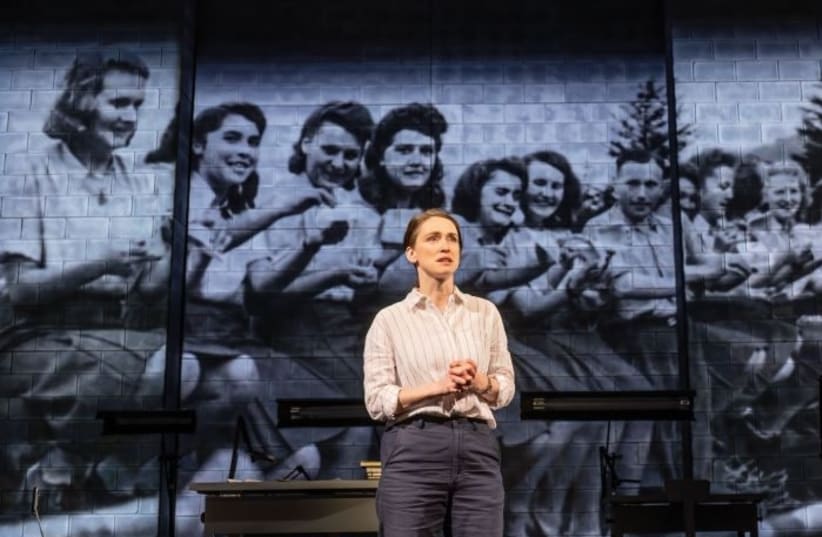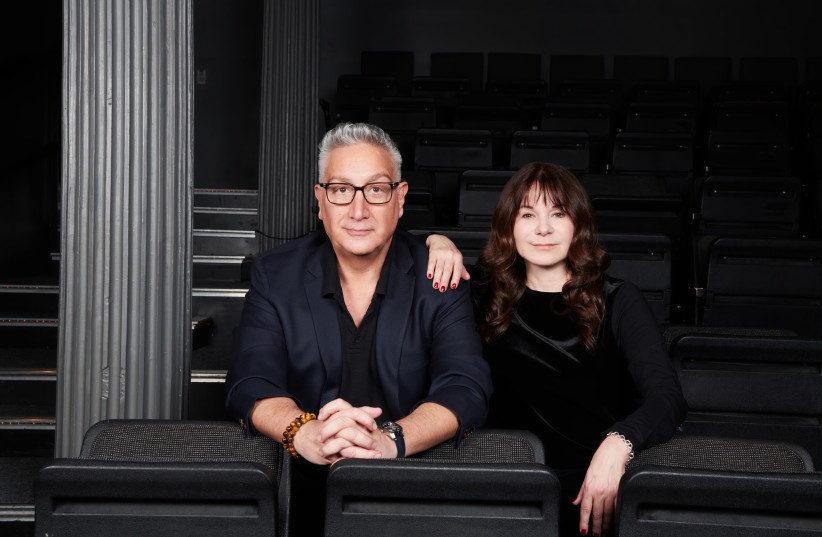“I’ve always wanted to write about the Holocaust,” the playwright Moisés Kaufman, son of a Romanian Holocaust survivor, told me this week. “But it’s the one thing in history that has been most written about. What is there new to say?”
Then Kaufman read, on the front page of The New York Times, dated Sept. 19, 2017, about a remarkable album of photographs donated anonymously to the US Holocaust Memorial Museum. More than 100 carefully mounted snapshots depict Nazi soldiers and unidentified young women in relaxed poses — sunbathing, enjoying an accordion recital, eating bowls of blueberries on a length of fence.
Thanks to the detective work of a young archivist named Rebecca Erbelding, the photos began to give up their secrets. They were taken and collected between 1944 and 1945 by Karl Höcker, the adjutant or right-hand man, to Rudolf Höss, the commandant of Auschwitz. They include high-ranking architects of the Nazi death machine, including Josef Mengele, the death camp’s notorious and rarely photographed “angel of death.” They show camp guards and their families relaxing at Solahütte, a spa built on the far reaches of the camp complex.
What they don’t depict are any of the 1.1 million Jews being exterminated by and under the direction of the officers and flunkies seen smiling in what Kaufman’s frequent collaborator, Amanda Gronich, calls “the selfies of an SS officer.”
The Venezuelan-born Kaufman, best known for “The Laramie Project,” a play and HBO film about the murder of the gay student Matthew Shepard, had found his latest subject.
“We’re trying to understand something profound about the people in the photographs,” Kaufman said. “I always felt if we did our job correctly, the play would speak to many moments in history, because the play basically deals with this idea that there’s a continuum between culpability, complicity and complacency.”
The result of his latest collaboration with Gronich, “Here There Are Blueberries” is now playing at New York Theatre Workshop, in a taut, 90-minute production that was a finalist for this year’s Pulitzer Prize in drama. Based on interviews with its subjects, the play puts Erbelding (Elizabeth Stahlmann) at the center of what the co-authors call a “detective story” — less a whodunit than an exploration of why they did it and, perhaps most chillingly, what separates these former clerks, bank tellers, and teenage girls from the rest of us.
“We were trying to take away any ability from the audience members to create a distance between what the Nazis did and what we are all capable of doing,” said Kaufman in a joint Zoom call with Gronich. “The Nazis were not monsters — they were normal people who did monstrous things. And if you can keep that in your brain, as uncomfortable as that is, then you have to ask yourself the question: What would I do in that situation?”
“Blueberries” joins a long list of recent plays focusing on the Holocaust, including Tom Stoppard’s Broadway hit “Leopoldstadt,” Joshua Harmon’s “Prayer for the French Republic,” a new “Cabaret” revival and, returning this fall after a staging at the Brooklyn Academy of Music, “Our Class,” about a 1941 pogrom in a Polish village.
The play also arrives on the heels of “The Zone of Interest,” Jonathan Glazer’s Oscar-winning film about Höss, which similarly depicts Nazi families gamboling in the shadow of the death camp. The Höss family photos also are featured in “Blueberries,” accompanying the testimony of one of the commandant’s appalled and repentant grandsons. Höss’ son is the subject of an upcoming Warner Bros. Pictures documentary, “The Commandant’s Shadow.”
When I asked about the confluence of the films and his play, Kaufman noted that projects on similar topics often arrive at the same time. But he also noted trends in Holocaust scholarship, which in the past 10 years or so has shifted attention from the victims to the perpetrators. In 2017, for instance, Clark University’s Strassler Center for Holocaust and Genocide Studies held an international conference on “perpetrators and justice,” and the human rights lawyer Philippe Sand has written a number of recent books about high-ranking Nazis and their families.
Gronich also suggested that scholars want to gather these stories before it is too late. “Just as the survivors are disappearing, so too are the perpetrators,” she said. “We’re about to lose all the witnesses.”
“The Zone of Interest” became a talking point in the discourse around the Israel-Hamas war when Glazer spoke in his Oscars speech of Israel’s “dehumanizing” occupation. Kaufman noted that he began work on his play seven years ago, and says he leaves it to the audience “to have a conversation with the play about not only who they are but about what’s happening in the world.”
What makes 'Blueberries' stand out?
What separates “Blueberries” from other works about the Holocaust, and avoids what one critic calls “Holokitsch,” is its forensic examination of the perpetrators. (The play is set in the archivists’ laboratory, with the photographs projected behind them in exquisite, chilling detail.) In the play, Judith Cohen, a real-life curator at the museum (played by theater legend Kathleen Chalfant), reminds Erbelding that the mandate of the museum is to elevate and memorialize the victims, not the perpetrators. The two debate whether displaying the photos will somehow “normalize” the Nazis or traumatize survivors.
Two other shifts in focus (a phrase to be taken almost literally in a play that begins with a spotlight on the portable Leica camera popular in war-time Germany) also distinguish the play. Kaufman and Gronich introduce Tilman Taube, a German businessman who saw the Höcker photographs in a German newspaper and recognized his grandfather, a doctor, in an SS uniform. Taube’s interviews with the children and grandchildren of other perpetrators seen in the photos produce some of the play’s most startling monologues.
Finally, the play pivots once again to include the testimony of Irene Weiss, an Auschwitz survivor who, while recovering from typhus at a camp hospital, discovered yet another album of photos taken by the SS. These include photographs of her and the moment when the rest of her family were selected for the gas chambers. As the photos are shown behind her, Stahlmann offers Weiss’ testimony — images and words that the Germans tried desperately to keep out of the frame.
“I’ve been doing theater for 40 years now,” said Kaufman. “I have never heard the kind of silence that I hear in the audience when they’re watching this play.”
In a talkback after Wednesday’s performance, Menachem Rosensaft, an attorney and former official of the World Jewish Congress who was born to survivor parents at the Bergen-Belsen displaced persons camp, said “Blueberries” was “one of the strongest and most powerful depictions of the Holocaust that we have.”
And perhaps that’s because while the show tells an intensely specific story, it also widens the lens to place important demands on the audience. The play takes its name from the photograph of those women enjoying a snack on day off from staffing the phone lines and Telex machines at the death camp’s communications center.
The play asks: How much did they know? But another question stuck with me hours after I left the theater: What would it take for my friends and neighbors — what it would take for me — to be pulled into or turn a blind eye to a system of barbarity or lawlessness in the name of country or an ideology?
“What happens when an ideology, a group think, captures the imagination of a nation?” said Gronich. “What happens when you are coming from a place of deep-seated belief that what you were doing is necessary — that what you were doing is the right thing?”
New York Theatre Workshop (79 East 4th St.) presents “Here There Are Blueberries” through June 16. A co-production with Tectonic Theater Project, it is co-written by Moisés Kaufman and Amanda Gronich and conceived and directed by Kaufman.
The views and opinions expressed in this article are those of the author and do not necessarily reflect the views of JTA or its parent company, 70 Faces Media.

